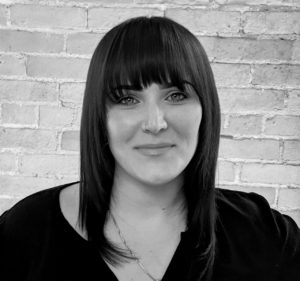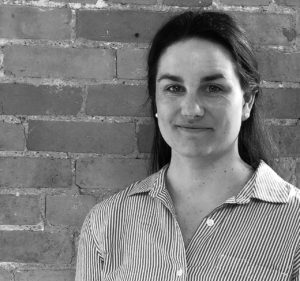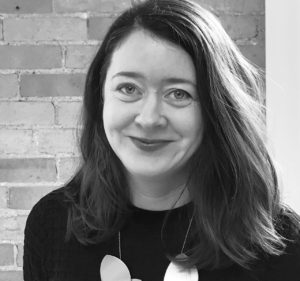Q & A: On Design Thinking, with Rabbi Yossi, Photographer
Rabbi Yossi may be the senior rabbi at Toronto’s Beth Torah congregation, but he also has a longstanding passion for photography. Our Q&A with Yossi is the final instalment in our four-part series on Design Thinking.
In his leadership role, Rabbi Yossi supports his parishioners through key life cycle moments in their lives – birth, death, counselling, marriages – while also helping to manage the business aspects of his synagogue. And, he has a longstanding devotion to Living Jewishly, an organization dedicated to creating Jewish experiences that give people an opportunity to get involved and feel connected to their community.
It’s this very same commitment to community and interest in people and the world we live in that inspires Yossi’s love and investment in photography. He is quick to describe the creative eye and design philosophy he employs when engaging in this storytelling medium: “I’m not looking to put myself into the photo, and I’m not interested in broadcasting where the photo comes from. If I’m shooting a picture of a flower, I don’t need to have the city line in the background to show you where I was when I shot the image. Also, the stuff I shoot is designed to make you feel whatever you feel, not what I feel. If what I’m putting out there doesn’t make you feel, move on to the next image, but if it does make you feel, you may experience something that I never could have anticipated.”
How does creative thinking inform your work as a rabbi?
There’s creativity in everything, because no two people are the same and not every synagogue, population or even answer to an issue is the same. Virtually every circumstance is unique, and you need to be creative from a variety of perspectives to assist people on their journey through life: psychologically, emotionally, from a business, finance, innovation and even strategic point of view — all these angles are really critical.
Why did you first want to invest in photography as a creative medium?
I’ve always been curious about and loved witnessing nature and the world around me. I bought a camera when I was 15 and I’ve taken photographs ever since. Eventually, I started working in photography professionally, but ultimately didn’t enjoy commercial work, so I just went back to shooting…what I see. And have been surprised to find that what I see is not always what other people see. It’s a very soulful pursuit, in that I feel at one with what I’m photographing – but it’s also not a solo pursuit anymore because I can share my work with people I love and care about.
How would you describe your creative process?
It’s interesting. I can’t shoot all the time. There are many days where I don’t have what I call “the eye.” It’s just not there. It’s a confluence of a creative mode and a need for silence in my mind. When I’m out there on days that I’m really connected to my creativity, I just get this sense that the world is popping out at me. I see the depth of the imagery that I’m looking at, and it kind of speaks to me in that way. The creative process starts with that feeling, followed by looking around and asking myself if I see an interesting visual subject to explore. The mechanics of it are pretty straightforward, and I find as much satisfaction in the editing process as I do taking photos because I can reimagine what I was thinking, where I was and try to convey that to the potential viewer.
Where do you find inspiration for your photography?
I do look at other photographers, but the truth is that the inspiration I find in photography is really about the inspiration I find in fearless living, where you’re not afraid to show how you feel, what you think. You’re not afraid to put yourself out there. That’s important. Photography is like any other expression of art except for the fact that you have to be willing to be seen. It’s a lifelong pursuit to learn how to recognize what you’re good at, what you’re not, what you’re capable of and what people love in your work. The creativity is driven by trust in other people who give feedback, which is no different than when I go to another photographer’s website and look at their work. They’re confident enough with their work that they’re willing to put it out to the world. That’s what I try to achieve as well.
How does photography relate to your work at Beth Torah congregation?
It provides an important and informal break from the intensity of the work. As well, it provides dimensionality to me as person – so I’m more than just a rabbi sitting in an office talking to someone. It sharpens my skills as a leader. It sharpens my ability to see the world and find it renewed and refreshed and interesting over and over and over again, not growing weary of the world around me, which can be challenging in the profession I’m in. The world isn’t always a pretty place, and you need to remind yourself of its beauty. Also, it helps me focus on seasons, key transitions and to maintain a search for meaning.
Would you give any advice to people trying to make creative thinking a bigger part of their life?
Creative thinking requires two major components: (1) the ability to recognize that you may be able to do something unique and (2) believing people you trust when they say your work is worthwhile and innovative.
Project Title
Far far away, behind the word mountains, far from the countries Vokalia and Consonantia, there live the blind texts. Separated they live in Bookmarksgrove right at the coast of the Semantics, a large language ocean. A small river named Duden flows by their place and supplies it with the necessary regelialia. It is a paradisematic country, in which roasted parts of sentences fly into your mouth.




